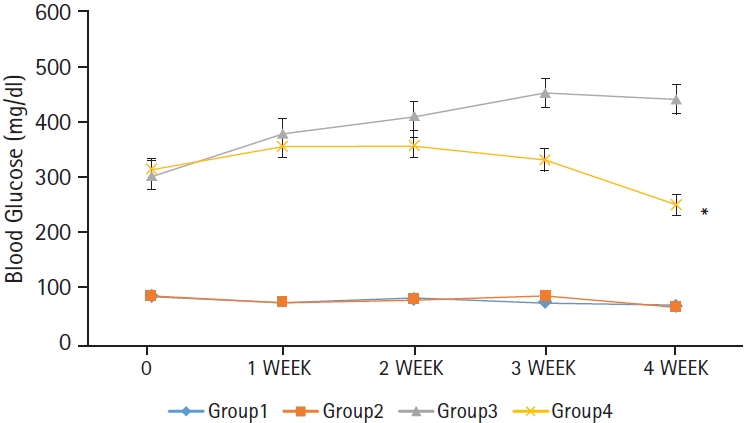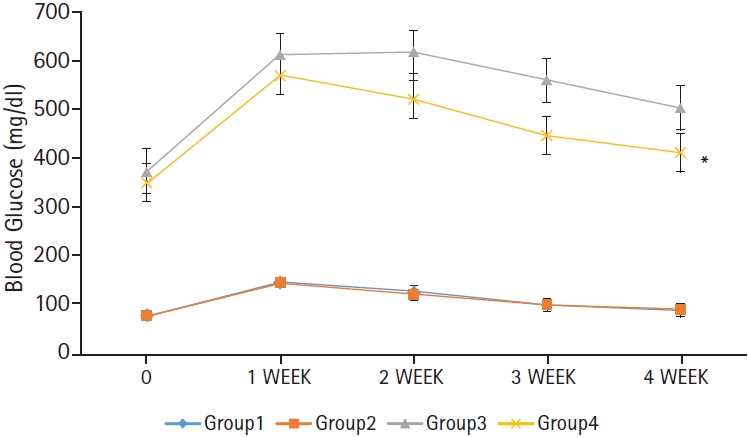1. Pareek OP, Singh RS, Vashishtha BB. Performance of cactus pear [Opuntia ficus-indica (L.) Mill.] clones in hot arid region of India. J Prof Assoc Cactus Dev 2003;5:121-130.
2. Singh G. General review of Opuntias in India. J Prof Assoc Cactus Dev 2003;5:30-46.
3. Zourgui L, Golli EE, Bouaziz C, Bacha H, Hassen W. Cactus (Opuntia ficus-indica) cladodes prevent oxidative damage induced by the mycotoxin zearalenone in Balb/C mice. Food Chem Toxicol 2008;46:1817-1824.


4. Salim N, Abdelwaheb C, Rabah C, Ahcene B. Chemical composition of Opuntia ficus-indica (L.) fruit. Afr J Biotechnol 2009;8:1623-1624.
5. Frati-Munari AC, Gordillo BE, Altamirano P, Ariza CR. Hypoglycemic effect of Opuntia streptacantha Lemaire in NIDDM. Diabetes Care 1988;11:63-66.


7. Bell GI. Lilly lecture 1990. Molecular defects in diabetes mellitus. Diabetes 1991;40:413-422.


8. Liu B, Ying Li, Ghosh S, Sun Z, Ng K, Hu J. Simultaneous modeling of multiple complications for risk profiling in diabetes care. CoRR 2018;abs/1802.06476.
9. Mahomed IM, Ojewole JA. Hypoglycemic effect of Hypoxis hemerocallidea corm (African potato) aqueous extract in rats. Methods Find Exp Clin Pharmacol 2003;25:617-623.


10. de la Garza-Rodea AS, KnaûÊn-Shanzer S, den Hartigh JD, Verhaegen AP, van Bekkum DW. Anomer-equilibrated streptozotocin solution for the induction of experimental diabetes in mice (Mus musculus). J Am Assoc Lab Anim Sci 2010;49:40-44.


11. Naselli F, Tesoriere L, Caradonna F, Bellavia D, Attanzio A, Gentile C, Livrea MA. Anti-proliferative and pro-apoptotic activity of whole extract and isolated indicaxanthin from Opuntia ficus-indica associated with re-activation of the onco-suppressor p16(INK4a) gene in human colorectal carcinoma (Caco-2) cells. Biochem Biophys Res Commun 2014;450:652-658.


12. Rtibi K, Selmi S, Saidani K, Grami D, Amri M, Sebai H, Marzouki L. Reverse effect of Opuntia ficus-indica L. juice and seeds aqueous extract on gastric emptying and small-bowel motility in rat. J Food Sci 2018;83:205-211.


13. Zhao LY, Lan QJ, Huang ZC, Ouyang LJ, Zeng FH. Antidiabetic effect of a newly identified component of Opuntia dillenii polysaccharides. Phytomedicine 2011;18:661-668.


14. Abd El-Razek FH, El-Metwally EM, Shehab GM, Hassan AA, Gomaa AM. Effects of cactus pear (Opuntia ficus indica) juice on oxidative stress in diabetic cataract rats. Saudi J Health Sci 2012;1:23-29.

16. Jouad H, Haloui M, Rhiouani H, El Hilaly J, Eddouks M. Ethnobotanical survey of medicinal plants used for the treatment of diabetes, cardiac and renal diseases in the North centre region of Morocco (Fez-Boulemane). J Ethnopharmacol 2001;77:175-182.


17. Linarû´s E, Thimonier C, Degre M. The effect of NeOpuntia on blood lipid parameters--risk factors for the metabolic syndrome (syndrome X). Adv Ther 2007;24:1115-1125.


18. Zorgui L, Ayed-Boussema I, Ayed Y, Bacha H, Hassen W. The antigenotoxic activities of cactus (Opuntia ficus-indica) cladodes against the mycotoxin zearalenone in Balb/c mice: prevention of micronuclei, chromosome aberrations and DNA fragmentation. Food Chem Toxicol 2009;47:662-667.


19. Feugang JM, Konarski P, Zou D, Stintzing FC, Zou C. Nutritional and medicinal use of Cactus pear (Opuntia spp.) cladodes and fruits. Front Biosci 2006;11:2574-2589.


20. Berraaouan A, Abderrahim Z, Hassane M, Abdelkhaleq L, Mohammed A, Mohamed B. Evaluation of protective effect of cactus pear seed oil (Opuntia ficus-indica L. MILL.) against alloxan-induced diabetes in mice. Asian Pac J Trop Med 2015;8:532-537.


21. Hassan F, El-Razek A, Hassan AA. Nutritional value and hypoglycemic effect of prickly cactus pear (Opuntia ficus-indica) fruit juice in alloxan-induced diabetic rats. Aust Jô Basicô Appl Sci 2011;5:356-377.
22. Harris EH. Elevated liver function tests in type 2 diabetes. Clinical Diabetes 2005;23:115-119.

23. Shah MA, Reanmongkol W, Radenahmad N, Khalil R, Ul-Haq Z, Panichayupakaranant P. Anti-hyperglycemic and anti-hyperlipidemic effects of rhinacanthins-rich extract from Rhinacanthus nasutus leaves in nicotinamide-streptozotocin induced diabetic rats. Biomed Pharmacother 2019;113:108702.


24. Fernandez ML, Lin EC, Trejo A, McNamara DJ. Prickly pear (Opuntia sp.) pectin reverses low density lipoprotein receptor suppression induced by a hypercholesterolemic diet in guinea pigs. J Nutr 1992;122:2330-2340.


25. Fernandez ML, Lin EC, Trejo A, McNamara DJ. Prickly pear (Opuntia sp.) pectin alters hepatic cholesterol metabolism without affecting cholesterol absorption in guinea pigs fed a hypercholesterolemic diet. J Nutr 1994;124:817-824.













 PDF Links
PDF Links PubReader
PubReader ePub Link
ePub Link Full text via DOI
Full text via DOI Download Citation
Download Citation Print
Print



